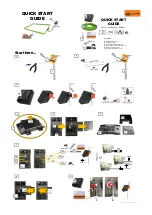
The default setting for the timeout parameter is 5 seconds.
9.5.1 MultiHop Networks vs DX80 Star Networks
The DX80 star Gateway collects all the data from the Nodes, which allows the host system to directly read the data from
the Gateway without sending messages across the wireless network. This allows for DX80 Gateway to be treated like any
other wired Modbus device.
In a MultiHop network, the data resides at each device, forcing the controller to send messages across the wireless
network to access the data. For this reason, carefully consider the value of the wireless timeout parameter.
9.5.2 MultiHop Radios Powered by Battery
Battery-powered MultiHop radios are configured to run efficiently to maximize battery life. By optimizing battery life, the
allowed communications window for receive messages is slow (once per 1.3 seconds) and sending message rates are
standard (once per 0.04 seconds).
A MultiHop device is set from the factory with the retry parameter set to 8. This means that under worst-case conditions, a
message is sent from the DXM Controller to an end device a total of nine times (one initial message and eight retry
messages. The end device sends the acknowledgment message back to the DXM Controller a maximum of nine times (one
initial message and eight retries). A single Modbus transaction may send up to two me 16 retry messages before
the transaction is complete. In addition, the radios randomly wait 0–1 time period before retransmitting a retry message.
So to allow for the random wait time, add one extra time period for each in-between time of retries.
For a Master radio to a slave radio (no repeaters):
•
Master to Slave Send time = (9 × 1.3 sec) + (8 retry wait × 1.3 sec) = 22 seconds
•
Slave to Master Send time = (9 × 0.04 sec) + (8 retry wait × 0.04 sec) = 1 second
•
Total Send/Receive time = 23 seconds
•
Minimum Timeout period = 23 seconds
This calculates the maximum timeout value for a wireless transaction. If the link quality of the network is poor, the
maximum transfer times may happen. Set the timeout parameter to accommodate the maximum number of retries that
may happen in your application.
When MultiHop repeaters are added into the wireless network, each additional level of hierarchical network increases the
required timeout period. Since MultiHop repeaters are running at the highest communications rate, the overall affect is not
as great.
•
Master to Repeater Send time = (9 × 0.04 sec) + (8 retry wait × 0.04 sec) = 1 second
•
Repeater to Master Send time = (9 × 0.04 sec) + (8 retry wait × 0.04 sec) = 1 second
•
Additional Timeout period for a repeater = 2 seconds
Using the timeout calculation above of 23 seconds, if a repeater is added to the network the timeout should be set to 25
seconds. For each additional MultiHop repeater device creating another level of network hierarchy, add an additional two
seconds to the timeout period.
9.5.3 MultiHop Radios Powered by 10-30 V DC
Line-powered (10–30 V dc) MultiHop devices operate at the maximum communication rate, resulting in a much lower
timeout parameter setting. For each repeater added to the network, increase the timeout parameter 2 seconds.
For a Master radio to a 10–30 V dc powered slave radio (no repeaters):
•
Master to Slave Send time = (9 × 0.04 sec) + (8 retry wait × 0.04 sec) = 1 second
•
Slave to Master Send time = (9 ×* 0.04 sec) + (8 retry wait × 0.04 sec) = 1 second
•
Total Send/Receive time = 2 seconds
•
Minimum Timeout period = 2 seconds
9.5.4 Adjusting the Receive Slots and Retry Count Parameters
The number of receive slots governs how often a MultiHop device can communicate on the wireless network.
Battery-powered devices typically have DIP switches that allow the user to set the number of receive slots. (This will
directly affect the battery life of the device.) Adjusting the receive slots changes how often a message can be received. In
the battery power example (default factory settings) the receive slots are 1.3 seconds (receive slots = 4). With the receive
slots set to 32, how often a message can be received goes from 1.3 seconds down to 0.16 seconds.
An argument can be made to allow the application accessing the wireless network, in this case the DXM Controller, to
control the retry mechanism. The number of retries can be adjusted in the MultiHop devices by writing Modbus register
6012 to the number of retires desired. The factory default setting is eight.
DXM100-Bx Wireless Controller Instruction Manual
www.bannerengineering.com - Tel: 763.544.3164
67
















































